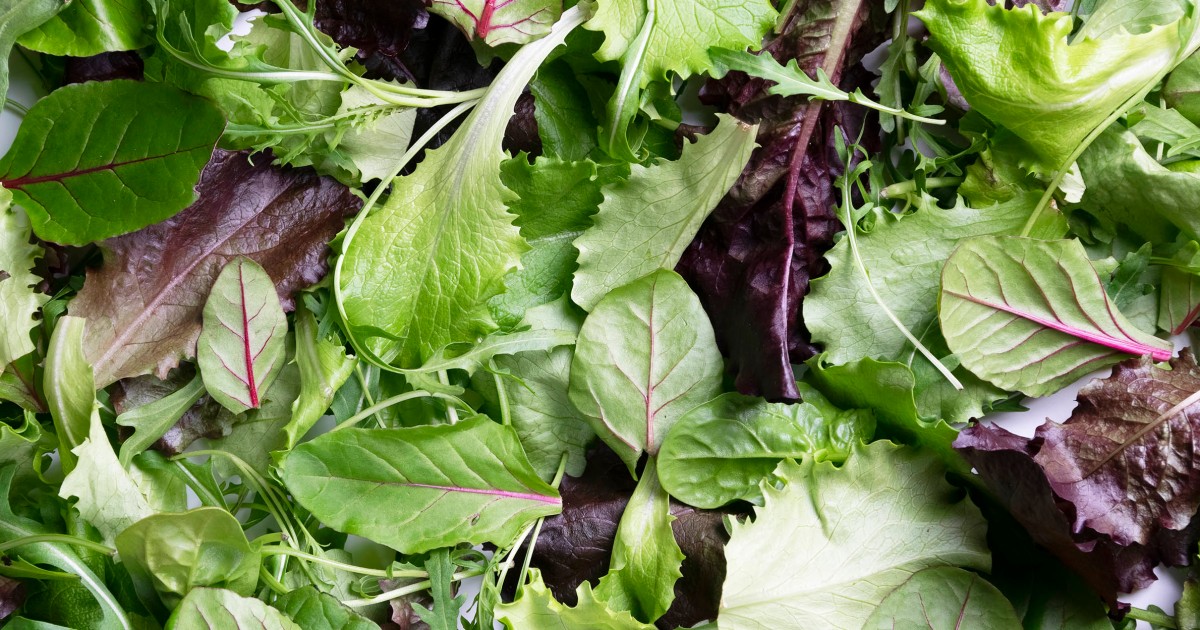Welcome to Start TODAY. Sign up for our Start TODAY newsletter to receive daily inspiration sent to your inbox — and join us on Instagram!
The best diets are healthy eating patterns that emphasize whole, nutrient-rich plant foods and minimize heavily processed foods, such as those high in added sugar and refined grains. There are many ways to approach this eating style to fit within your budget, cultural considerations and food preferences.
When you follow a nutritious dietary pattern, you benefit from a range of nutrients that protect your cells from inflammation and oxidative stress, which can cause damage and promote diseases like heart disease, stroke, Type 2 diabetes and cognitive decline.
The best diets also include plenty of fiber and other gut-nourishing nutrients. A healthy gut is involved in proper immune functioning, keeping inflammation in check, absorbing nutrients and regulating other bodily functions. So, a healthy gut is crucial for a healthy mind and body.
Here’s a look at the best diets and their pros and cons.
What is the No. 1 healthiest diet?
The Mediterranean diet consistently ranks as the best diet, so it’s probably unsurprising that it tops my list as a registered dietitian. This eating plan is not only backed by extensive research, but it’s also incredibly flexible: There are no concrete rules, and you can customize it to suit many different cultural cuisines.
Based on the traditional diets of countries bordering the Mediterranean Sea, a Mediterranean diet meal plan centers around vegetables, fruits, whole grains, legumes, nuts, and heart-healthy olive oil as the primary source of fat. Seafood is eaten frequently, at least twice a week, and while chicken and eggs are acceptable on most days, red meat is eaten less often. Dairy on the Mediterranean diet is served in the form of yogurt and cheese, but cheese, in particular, may be eaten in smaller amounts than you’re used to.
Heavily processed foods and sweets aren’t a way of life on the Mediterranean diet, but you can still enjoy these foods sometimes. Although the potential benefits of alcohol are now being re-examined thanks to new research, a glass of wine, particularly red wine, is often enjoyed at dinner on the Mediterranean diet.
Pros of the Mediterranean diet
Numerous studies show that following a Mediterranean diet can lower the risk of heart disease, stroke, Type 2 diabetes and memory impairment. Additionally, it’s linked to better brain health and longevity. The foods eaten on the Mediterranean diet are naturally filling, which may explain why it has also been associated with a healthier body weight.
Another benefit of the Mediterranean diet is that it’s flexible, so there’s no foods-to-avoid lists, counting calories or other rules you might associate with the word “diet.” Instead, it celebrates balance, flavor and enjoyment.
Cons of the Mediterranean diet
While some may see the lack of specific rules as a pro of the Mediterranean diet, it may be a con for those who want a more concrete road map to follow.
If you’re used to eating a lot of ultraprocessed foods, getting used to whole, mostly plant-based foods may take time. And this adjustment period may require more time for food shopping, prepping and cooking than you’re used to.
You may find it easier if you include some of your favorite cultural foods and adjust them to the Mediterranean eating pattern. For instance, while tacos may not be a way of life in Croatia, beans, avocados, veggies and whole grains are, so you can use this framework to make black bean or lentil tacos in a whole-grain corn tortilla shell.
What to look for in a healthy diet
All of the best diets emphasize the same foods. Here are some things to look for.
Primarily plant-based
You can include animal foods on a healthy diet, but the best diets are centered around plant foods.
Rich in veggies
Vegetables — particularly non-starchy veggies, like broccoli, asparagus, spinach and cauliflower — form the foundation of all of the healthiest eating patterns. They should take up the most room on your plate and therefore in your overall diet.
Emphasis on heart-healthy sources of fat
The healthiest eating patterns include unsaturated fats from avocados, nuts and seeds. Heart-healthy oils like extra virgin olive oil and avocado oil are used in cooking.
Emphasis on whole foods
Foods in their more natural state are unquestionably healthier than heavily processed foods.
Limited in heavily processed foods
There’s certainly a time and place for everything, so you don’t need to avoid these foods altogether, but the best diets are mindful of heavily processed foods, which include foods with excessive amounts of added sugar and sodium, those with refined grains, artificial sweeteners, preservatives, flavors and colors, and other additives like gums and thickeners. Some foods that fall into this category are fast food, chips, desserts, jerky, and protein bars.
Limited in red meat
Red meat, including beef and pork, has been associated with a higher risk of harmful outcomes, such as certain types of cancer and Type 2 diabetes.
Controlled in sodium, saturated fat and added sugar
We want to eat less of these substances, which is much easier to do when your diet emphasizes plant-based, whole foods.
Not too restrictive
I’d be wary of any diet with excessive rules that will make it hard to follow over time. You’ll get better results with manageable changes.
Best diets to follow to boost your health
Here are the best diets to follow for overall health, according to a dietitian.
Flexitarian diet
The flexitarian diet is a flexible, plant-forward eating pattern that emphasizes whole, minimally processed foods — mainly vegetables, fruits, whole grains and plant-based proteins, like tofu and pulses. However, you can also include animal products such as meat, poultry, fish, eggs, and dairy, although these foods may be eaten less frequently or in smaller portions.
Pros of the flexitarian diet
Since the flexitarian diet emphasizes plant-based foods, which are naturally higher in fiber, vitamins, antioxidants, and other health-promoting bioactive substances, you can expect benefits such as a lower risk of numerous chronic illnesses like Type 2 diabetes and heart disease.
Another significant advantage to this eating pattern is its flexibility. Since you don’t have to give up animal foods completely, it may appeal to people who want to eat a plant-forward diet but don’t want to restrict animal foods.
A mostly plant-based diet like the flexitarian diet can contribute to better nutrition and overall health while helping reduce the environmental impact of high meat consumption.
Cons of the flexitarian diet
If you’re not used to eating lots of plant foods, there may be a learning curve as you adapt to this dietary pattern. You may need to shop for foods you’re less familiar with and experiment with ways to cook them to make them enjoyable for you.
Like other plant-focused diets, you may need to pay careful attention to certain nutrients like protein, calcium, vitamin B12 and omega-3 fatty acids to ensure you’re meeting your needs.
Pescatarian diet
The pescatarian diet is a vegetarian diet that allows for seafood. Since it’s a vegetarian diet at its core, some pescatarians include dairy and eggs, but others don’t.
Pros of the pescatarian diet
A major benefit of the pescatarian diet is the inclusion of healthy fish, which is rich in omega-3 fatty acids, known for supporting heart health, reducing inflammation and promoting brain function.
By avoiding red and processed meats, pescatarians may reduce their risk of heart disease and certain cancers.
Since the pescatarian diet allows for a broader range of protein options than a strict vegan or vegetarian diet, it may be easier to follow.
Cons of the pescatarian diet
One concern with the pescatarian diet is that you need to be mindful of varying your healthy seafood intake to reduce your risk of high mercury levels. Certain fish, such as white (albacore) tuna, are higher in mercury, and this toxin can build up in your tissues and lead to potential health problems if you aren’t careful with your intake. Mercury is especially harmful to pregnant and breastfeeding women and children, but rather than avoiding fish, eating lower mercury fish at least twice per week is recommended.
Another consideration is cost, as seafood can be more expensive than other protein sources, which may make this diet less accessible for some people.
Vegan diet
The vegan diet is an entirely plant-based eating plan, meaning that all animal products — from meat, dairy and eggs to honey — are excluded.
Pros of the vegan diet
It’s hard to ignore the favorable research coming out about the vegan diet. For instance, a study on 22 pairs of identical twins — one who followed a vegan diet and the other who followed a healthy diet that included lots of plant foods and animal proteins — found that in just eight weeks, the twins following the vegan diet had significantly lowered unhealthy cholesterol and insulin levels compared to the other twin. Vegan twins also lost an average of 4.2 more pounds than their siblings. Given that these siblings had the same genetic makeup and the study took place over a short period of time, these results are even more stunning.
A vegan diet is also naturally high in fiber, antioxidants and other health-promoting compounds found in plant foods.
Cons of the vegan diet
While research behind the vegan diet is impressive, the diet requires a lot of planning to achieve balance and variety, and many people will find it challenging to follow long-term. Since a vegan diet is more restrictive than other diets, many people lean on heavily processed plant-based foods, such as imitation meats, and this may counter the benefits of a vegan diet.
Key nutrients like vitamin B12, iron, calcium and omega-3 fatty acids, which are often found in animal foods, can be harder to obtain from a plant-only diet. That said, a 2022 study found that fiber, folate, vitamin D, E, calcium, magnesium, polyunsaturated fats, and the plant-based omega-3 ALA are lower among meat eaters, so it should be noted that all eating patterns are at risk for inadequate intake of certain nutrients.
DASH diet
The DASH diet, which stands for Dietary Approaches to Stop Hypertension, was originally designed to help lower blood pressure, but over time, researchers have discovered other benefits.
This diet emphasizes whole foods, such as fruits, vegetables, whole grains, lean proteins and low-fat dairy, but with a more concrete plan than other diets on this list. Like other diets, the DASH diet limits saturated fats and added sugars, but it goes the extra step in limiting sodium to between 1,500 and 2,300 milligrams per day.
Pros of the DASH diet
Studies on the DASH diet have shown that it lowers high blood pressure, reducing risk of heart disease and stroke. Additionally, the diet is associated with better bone health, brain health, and kidney health. The diet is also associated with a lower risk of dying from any cause, even among those who don’t follow it perfectly. These benefits come from the fact that the diet is rich in nutrients like potassium, calcium, magnesium and fiber.
If you prefer a clear framework, you may want to consider the DASH diet since you’ll get guidance for the number of servings of fruits, veggies, whole grains, dairy foods, lean proteins, nuts and legumes, and sweets to eat per day or week.
Cons of the DASH diet
If you’re used to salting your foods, restaurant meals, or lots of heavily processed foods, you may require some time getting used to the lower sodium limits on the DASH diet. Don’t worry — studies show this can be done in as little as two weeks, but you may feel like your food tastes bland at first.
And while you don’t have to eat dairy on the DASH diet, you may not get the same results as those who include it.
Read the full article here


:focal(1226x240:1228x238)/origin-imgresizer.eurosport.com/2024/11/24/4065430-82446248-2560-1440.jpg)













